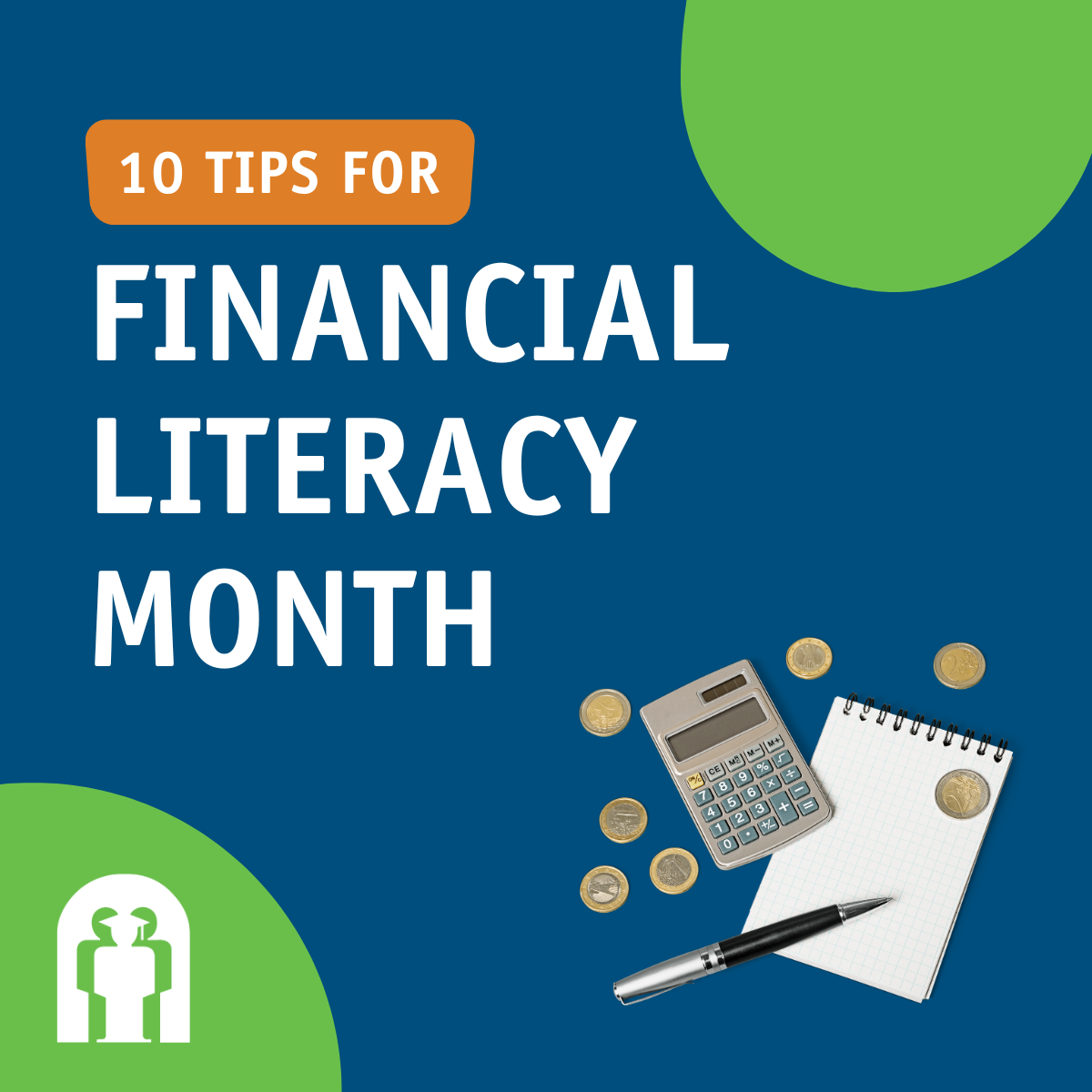10 Tips for Financial Literacy Month
 Throughout the month of April, NASFAA joins the higher education community and other organizations across the country to celebrate Financial Literacy Month. Making smart choices with your money doesn’t stop with paying for college — students need to be educated about managing their financial lives outside of school, too. Take a look below for 10 tips you can share with your students this Financial Literacy Month along with downloadable social media graphics.
Throughout the month of April, NASFAA joins the higher education community and other organizations across the country to celebrate Financial Literacy Month. Making smart choices with your money doesn’t stop with paying for college — students need to be educated about managing their financial lives outside of school, too. Take a look below for 10 tips you can share with your students this Financial Literacy Month along with downloadable social media graphics.
- Create a budget: Start by calculating your monthly income and expenses. Use this information to create a budget that works for you.
- Track your spending: Keep track of every dollar you spend to help you stick to your budget.
- Smart debt: If possible, avoid taking on debt. If you must take on debt, be aware of interest rates, and make sure payments fit into your budget.
- Save for emergencies: Set aside some money each month in case of emergencies.
- Save for the future: Start saving for retirement as early as possible to give your money time to grow.
- Live within your means: Try to live within your means by avoiding unnecessary expenses and making smart purchasing decisions.
- Plan for big expenses: Whether it's a down payment on a house or a new car, plan ahead for big expenses by saving up and making informed decisions about financing options.
- Be mindful of credit: Behaviors that lead to carrying monthly balances and spending more than you otherwise would with cash or a debit card can lead to more financial problems than if you avoided using credit altogether.
- Educate yourself: Learn about personal finance and investing so you can make informed decisions about your money.
- Ask for help: Don't be afraid to ask for help from a financial advisor or the financial aid office at your school.



